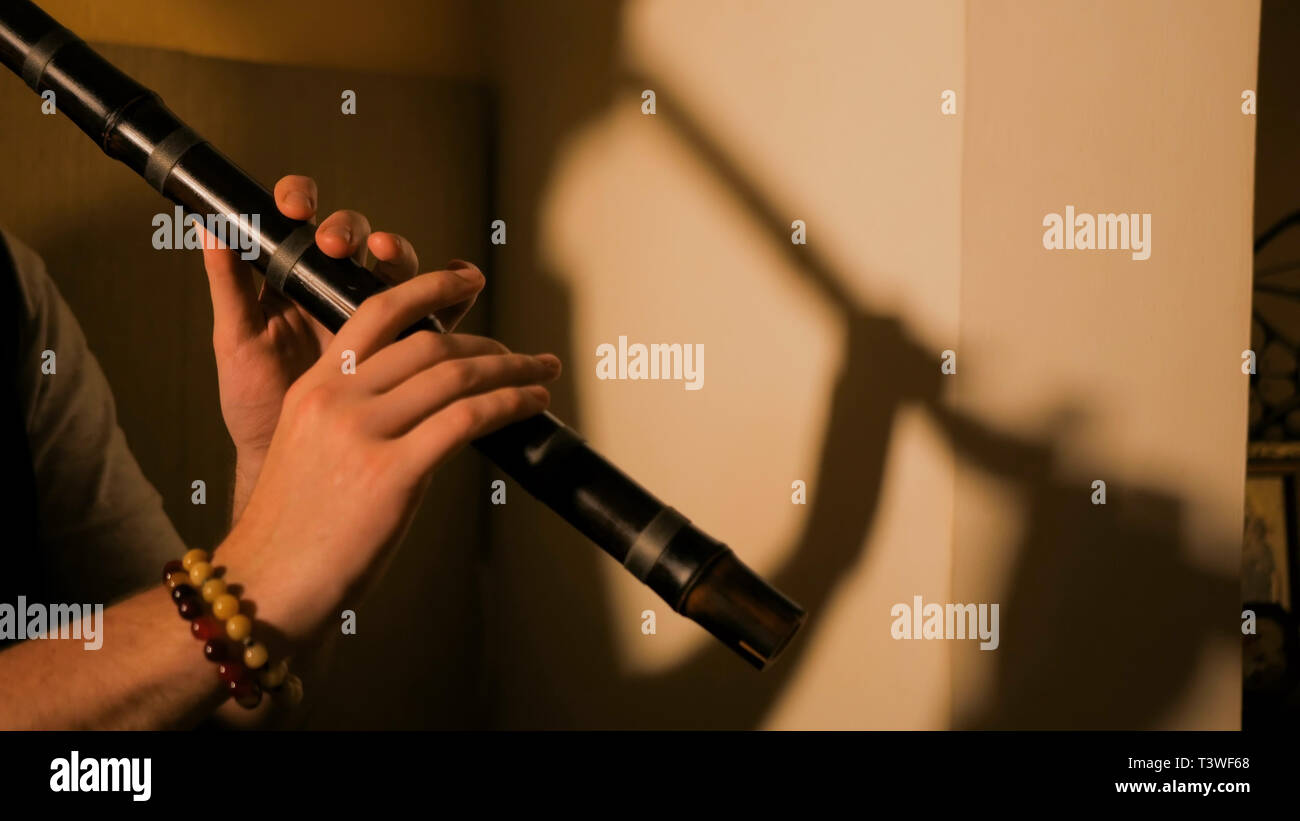

There are also shakuhachi instruments that are made from various wood-based materials, as well as plastic, making the instrument more affordable. Over time, the shakuhachi was cut into 2 parts with a middle joint construction which became the essential prototype of the contemporary shakuhachi. The more modern shakuhachi is made from the root end of the madake, consisting of a total of 7 culm joints, whereas the former old shakuhachi consisted of a single bamboo. The construction is marked by a total of 5 finger holes carved on its thick wall – four on the upper surface and one at the undersurface, ultimately forming a minor pentatonic scale.

Regarding its contour, the shakuhachi is the Japanese vertical bamboo flute meticulously crafted from “madake” (真竹) bamboo (Phyllostachys bambusoides). Nakao Tozan also collaborated with the renowned koto master “Michio Miyagi” (宮城道雄), which was an important contributive factor to the widening of the Tozan school.

He was a proponent of having musicians perform on stage in addition to the traditional setting, which continued to have the shakuhachi instrument become part of the performing arts. Nakao Tozan created the music tablature specifically for the Tozan school and was a prolific modern composer of his time. In 1896, “Nakao Tozan” (中尾都山) founded the “Tozan-ryu” (都山流) / Tozan school. Kinko Kurosawa’s highly intricate process of cataloguing and archiving this early methodology essentially transitioned the shakuhachi music from a solely spiritual tool to poignant collection of secular music.Īs the Fuke sect dwindled during the 19th century, the shakuhachi in turn became a musical instrument and performed more by the public at large – hence the ensemble performance of koto, shamisen, and shakuhachi came to be referred to as “sankyoku” (三曲). A significant figure during this period, Kinko Kurosawa traveled to all the komuso temples to research shakuhachi music before assembling and selecting 36 seminal pieces which would duly comprise the “Kinko-ryu honkyoku” (琴古流本曲) – that is, the shakuhachi repertoire to be performed by the komuso priests. Despite this official regulation, there were many people who started to learn the shakuhachi during this period and even performed with the koto and shamisen.Ī notable shift occurred during the 18th century as “Kinko Kurosawa” (黒沢琴古), a former samurai who became a shakuhachi instructor, became the founder of the “Kinko-ryu” (琴古流) / Kinko school of shakuhachi. Moreover, the Tokugawa Shogunate also known as the Tokugawa Bakufu and Edo Bakufu did not deem the shakuhachi to be a mere musical instrument, but rather considered it a spiritual tool only allowed to be utilized by the komuso, not civilians. Consequently, there is wide speculation that some komuso were required to spy for the shogunate while being dispatched under the guise of Fuke monks. Further, the task of learning the shakuhachi became required training for the komuso priests and, interestingly enough, the komuso managed to receive exemption from the shogunate in order to travel around Japan – a designation which, during this time, was strictly reserved for the shogunate. This shakuhachi is known as “Fuke shakuhachi” (普化尺八), which became the modern shakuhachi widely played today. The 14th century marked the re-emergence of the shakuhachi, but in the form of a shorter version of its predecessor called the “hitoyogiri” (一節切), which would proceed to gain wide popularity over the course of the next 400 hundred years before eventually meeting its demise in the early 19th century.ĭuring the 17th century, “Fuke-shu” (普化宗) / Fuke sect, a sect of Zen Buddhist monks, known as “komuso” (虚無僧), would begin to utilize the shakuhachi as a spiritual tool over the course of their pilgrimage throughout Japan. The shakuhachi used in gagaku is referred to as “kodai shakuhachi” (古代尺八), treasured at the “Shoso-in” (正倉院) in Nara, Japan. Shakuhachi bore its introduction by way of China during the 7th and 8th century and initially became one of the “gagaku” (雅楽) / Japanese court music instruments before subsequently disappearing for stretch of time.


 0 kommentar(er)
0 kommentar(er)
